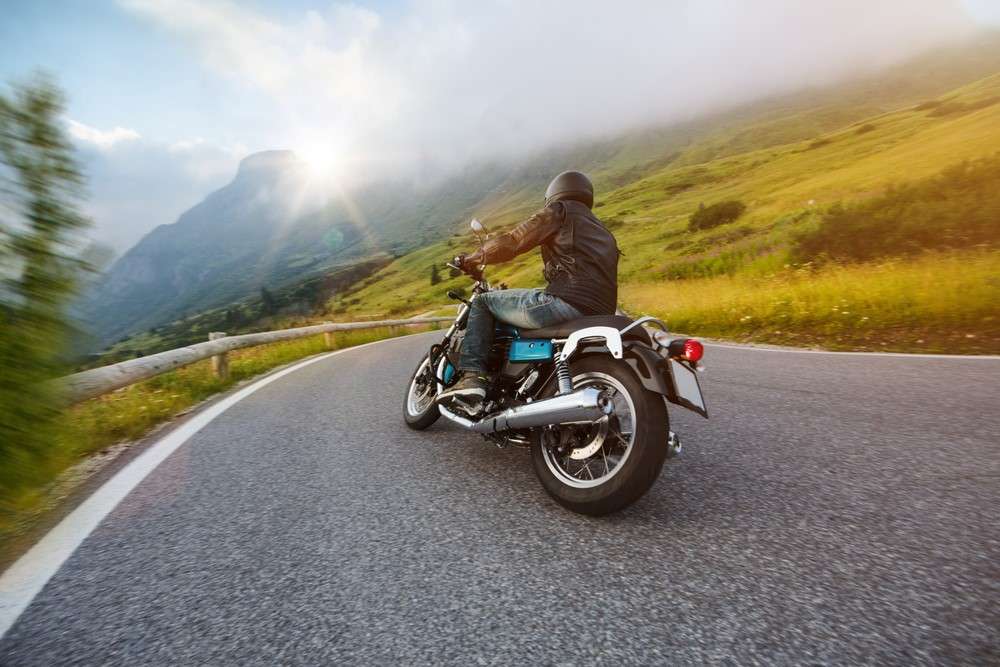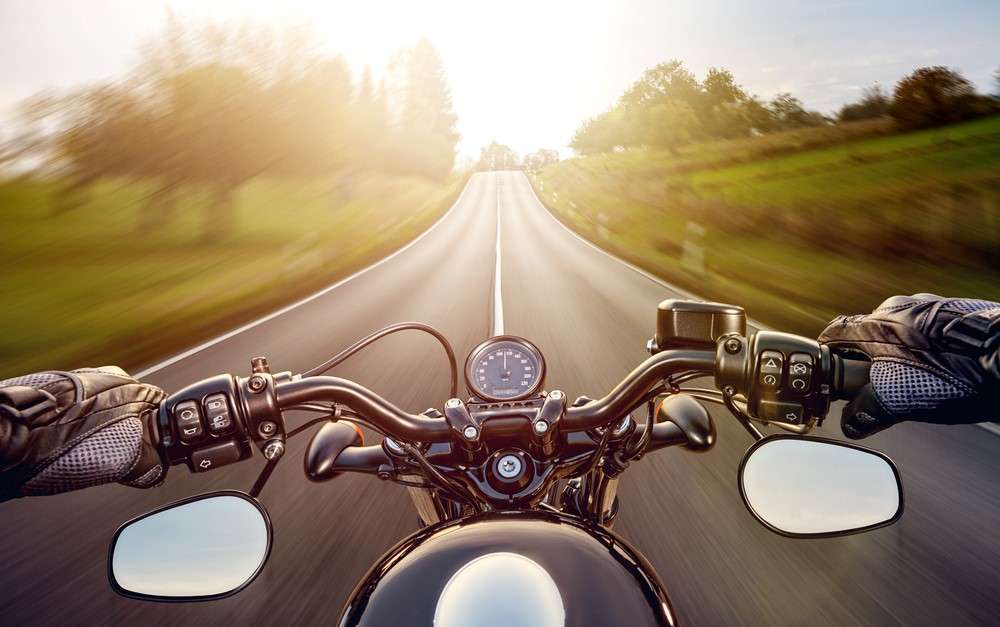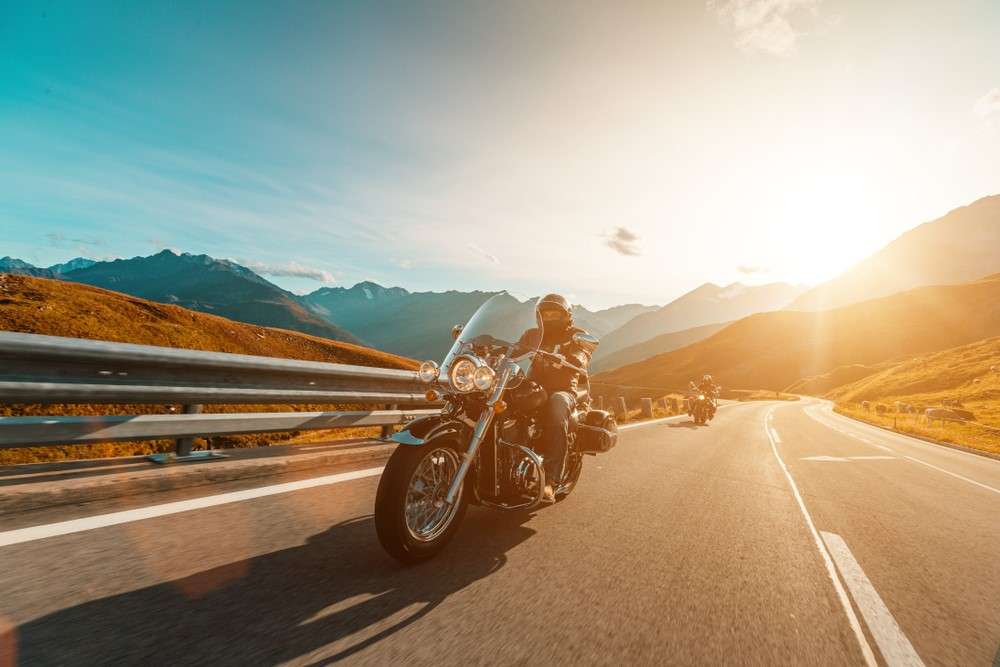A motorcycle road trip takes a typical drive down America’s highways. It turns it into a freeing, wholesome experience where it’s just you, two wheels, and the road.
However, it can also be a pretty trying experience if you don’t know what you’re doing. After all, you don’t have the shelter of a car to hide under if you get caught in a massive storm hundreds of miles from home. You can’t pack your whole house in the back, and of course, there are the typical dangers of riding a motorcycle at play.
Today, we want to go over one of the biggest things that can make your next motorcycle road trip a lot smoother than it would be without it: Preparation.
Being prepared for the trip will minimize your chances of facing a significant issue, making it more enjoyable. Let’s get started.
Getting Your Bike Prepared
First and foremost, your bike will be the main piece of gear you’ll be relying on. Whether traveling a state away or coast to coast, you need your bike in tip-top shape.
First, get the major stuff out of the way. This stuff means checking your tires, air filter, and motorcycle chain to see if any of those commonly replaced parts need replacing before your trip. You don’t want anything to happen if you’re on a long journey and far away from your home garage.
However, that’s not the only thing you need to do. Top off your fluids, double-check your saddlebag attachment points, test your onboard electronics, and preferably, get a general checkup done at your favorite mechanic. That will ensure your brake pads are in good shape, your hydraulics are bled, you have the best motorcycle battery, and all your bike’s more intricate parts are in perfect working condition.
Finally, if everything is in working order, top that tank off. Few things sour a good ride like running out of gas as you’re just getting started.
Prepping for Safety
Once you have checked your bike and are ready to go, you need to worry about yourself before packing everything in and setting off on your motorcycle road trip. We’ll cover each of the significant points individually.
Medication:
If you take medication for any condition, make sure you have enough for your trip in the bottles or packaging they’re prescribed in. This approach is key to maintaining your health when away from home and your local pharmacies. Keeping it in its original packaging will help you avoid unfortunate situations if you get pulled over.
Cell Charge and Service:
If you’re anything like most people, your phone is your primary contact with the outside world. It’s a tool for communicating across long distances and understanding the upcoming weather. It helps with finding out what’s nearby if you need something in a hurry, not to mention entertainment during traffic jams and other slowdowns.
Leaving for your trip without your phone – and a freshly paid bill, of course – can be disastrous.
Before you head out, make sure you have that in check.
Accountability for Your Whereabouts:
It’s unfortunate, but many things can happen in this world. Going to the store might be the last time you see your family, let alone crossing a long distance by bike.
Before you go, pick the two closest people to you, the most reliable people you know and trust, and let them know your exact plans. When are you leaving? Where are you going? Are there secondary stops? When will you be back? Those are all things that people you trust should know and look out for. If anything happens, whether foul play or an accident, someone will know where to direct help; it might save your life if you don’t come home on time.
Pre-Trip Planning
This planning should technically come before the other things, but it’s less important. You need to know what you’re doing, and even if you want to do some exploring, you should know the general plan.
Shelter:
You can’t sleep on your bike. You’re going to need shelter. Are you camping? Are you staying at a friend’s house? Are you going to rent a hotel room at various points? Figure that out for yourself.
If you plan to rent a hotel room, make sure you book your spot ahead of time. Many long-distance travelers have found themselves stuck without a room because they got to their destination and other guests took all the rooms. You don’t want to drive for hours looking for an open room.
If you’re planning on camping, pack the appropriate gear in your motorcycle storage.
Gas Stops:
You never know what the road conditions will be. You might have a smooth, consistent ride from New York to California or get stuck in a 10-hour traffic jam simply traveling from Illinois to Missouri. Either way, the amount of gas you have, and the number of refueling stations available, are essential. Try to plot your route and understand where the most critical gas stops are. This planning will keep you from hitchhiking or walking to the nearest gas station with your chin down.
General Route and Planning:
You can’t tell people where you’re going to be if you don’t even know it. It’s wonderful to wing it and go off the beaten path but chart your general course ahead of time.
While you’re at it, consider which cities would be best for lodging, where the main attractions are, and other significant details.

Packing Your Gear and Hitting the Road
Now that you have done all the pre-prep stuff, it’s time to focus on what you’ll need to comfortably make it through your motorcycle road trip.
Initial Supplies:
With current gas prices, you’re not going to want to pay more every time your stomach starts growling or you need to rehydrate. So, give yourself a running start with some easy-to-eat stuff packed away. When you inevitably get parched and starved five hours into balancing that big bike, you can simply pull over and get into your bags.
Not to mention, this can also be useful if you get lost or if something happens that prevents you from reaching a normal civilized area.
Clothes:
You’ll probably want to wear your leather clothes as much as possible on your bike. But what about when you get off to enjoy the sights or visit an attraction, though? You’ll need clean clothes. You can’t carry much on most bikes, but it’s good to pack at least a couple of days of street clothes.
Basic Necessities:
You don’t have the room to bring everything along with you. That’s just a fact. Instead, it would be best if you focused on your absolute necessities.
We’ve talked about small amounts of food and water, but what about bike maintenance, communication, and coordination?
Let’s take a look.
Bike Maintenance:
Your bike is the tool taking you on your road trip, and even if you get it checked out ahead of time, things can go wrong. Are you prepared for that?
We recommend having a roadside flat-repair kit on your bike somewhere. Just a simple patch kit and a can of fix-a-flat are enough. You don’t really have room for a spare as you do in a car, but those two things will help you get to a proper repair shop when you’re in a bind.
Also, consider carrying the exact wrenches and tools your motorcycle’s main parts require. If you need to change an air filter, work on your gas line, or something else, you can do it instead of waiting around for AAA or something.
Finally, don’t forget a roll of duct tape or a similar product. If your seat rips or some other minor thing happens, you can temporarily patch it up.
Communication:
For most people, this is their phone. However, your best choice might be different depending on what you’re planning on doing.
Are you planning on going deep into the mountains or desert? It might be a good idea to get a satellite phone to make emergency calls if you break down. Consider a mobile hotspot if you’re within range of cell towers and rely heavily on internet service. These are small devices that you have a monthly subscription for. You can use them to get a Wi-Fi connection on your phone, even when you have exceeded your phone carrier’s monthly limit.
Finally, consider a phone mount and headset. The mount will let you keep your phone at the ready on your bike, allowing you to access GPS, get notified of texts for the next time you get off the road, and see when you’re getting an important call. The headset can allow you to answer your most important calls, keep in contact with other riders in your party, and generally stay in communication despite needing to keep your hands and eyes on the road.

Coordination:
Finally, staying on track is key. You have fewer resources on your motorcycle than in a car. If you get lost, you can quickly run out of something important such as gas, battery charger for motorcycle, phone battery, etc. At that point, you have only your wallet and the hope that a store is nearby to get you through.
To keep that from happening, you need three main pieces of gear, two of which are on your smartphone.
First, just make sure to plug each destination into Google Maps for real-time directions. That should be your main form of coordination. Then, download offline copies of the maps to your destination if Google stops working or you lose internet access.
However, never forget to tuck a physical, old-fashioned paper map into your bag. You can trust a paper map to get you out of a sticky situation when your modern tech fails. It’s not as convenient as the electronic alternatives.
Cash:
Many people have moved more towards card transactions these days, and that’s perfectly fine, but those require you to make your purchases from stores equipped for card processing. Nowadays, most places are, but it’s not uncommon to find stores that only take cash on some of the more rural back roads and out-of-the-way spots.
When traveling, try to keep a small amount of cash on you to make small but necessary purchases. $50 is more than enough, and we wouldn’t recommend carrying too much more in cash. That might produce entirely different problems.
Motorcycle Manual:
You’re probably relatively new to the bike scene if this is your first road trip. What happens if you break down on the side of the road and have no idea what you’re even looking at to gauge the situation? You might not be qualified to fix everything on your bike, but there are things you can work on. If you bring your manual with you, you can work through the most common situations without panicking about tow trucks and mechanics for every little thing.
This approach is especially helpful if you bring along the limited number of suggested tools.
Above All, Bring Your A-Game
All these tips are helpful, and they are things you should consider before taking a motorcycle road trip. Still, there’s one thing we haven’t mentioned that trumps all of them: Experience.
Don’t buy your first bike, get your license, and jump into a cross-country road trip. If you were sixteen again and just got out of driver’s education courses, would you drive across the country?
Take some time, learn to ride, and spend as much time with your bike as possible. The more you know about how it operates, the more you’ll understand it when you need to.
To better prepare yourself for a long motorcycle road trip, check out the rest of The Motor Biker’s guides.

